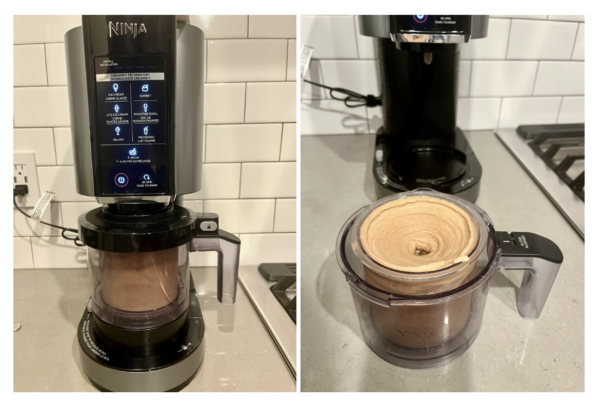Last Updated on January 24, 2024
Have you ever woken up to a warm fridge and a kitchen filled with spoiled food?
This all-too-common scenario highlights a crucial but often overlooked aspect of our daily lives: refrigerator maintenance.
Understanding the common issues that plague these essential appliances is not just about convenience; it’s about preserving our health, saving money, and reducing stress.
In this article, we delve into the most frequent refrigerator problems, from inconsistent cooling to mysterious noises.
Get ready to arm yourself with knowledge that could save your next grocery haul and keep your fridge running smoothly for years to come.
Inconsistent or Inadequate Cooling
One of the most noticeable signs of a refrigerator in distress is inconsistent or inadequate cooling.
This can manifest in various ways, from food spoiling prematurely to the fridge struggling to maintain a consistent temperature.
Causes:
- Dirty Condenser Coils: Over time, the condenser coils at the back of your fridge can accumulate dust and debris, hindering their ability to dissipate heat effectively. This buildup can lead to poor cooling performance.
- Faulty Door Seals: If the seals around the refrigerator doors are worn or damaged, cold air can escape. This not only leads to inadequate cooling, but also causes the fridge to work harder, increasing energy consumption.
- Thermostat Issues: A malfunctioning thermostat can fail to regulate the fridge’s temperature properly, resulting in either too much cooling or not enough.
Troubleshooting Tips:
- Regular Cleaning: Keep the condenser coils clean. A gentle vacuum or brush can remove the buildup, significantly improving performance.
- Check and Replace Seals: Inspect the door seals regularly for any signs of wear or damage. Replacing these seals is a simple yet effective way to improve cooling efficiency.
- Monitor and Adjust Thermostat: Ensure that the thermostat is set to the correct temperature. If adjustments don’t yield results, consider consulting a professional to check for deeper issues.
In some cases, inadequate cooling could be due to a more serious problem, like a failing compressor or refrigerant leak.
If basic troubleshooting doesn’t resolve the issue, it might be time to call in a fridge technician.
This proactive approach not only fixes immediate problems but also helps prevent future cooling inconsistencies, ensuring your refrigerator runs efficiently for years to come.
Unusual Noises and What They Mean
Refrigerators often make a variety of sounds during normal operation, but certain noises can be a sign of trouble.
Identifying these sounds and understanding their causes is crucial for maintaining the health of your appliance.
Types of Sounds and Potential Causes:
- Humming or Buzzing: A gentle hum is normal when the compressor is running. However, louder buzzing can indicate an issue with the compressor or a loose part.
- Clicking: Occasional clicking is common, but persistent or loud clicking might signify a problem with the start relay or compressor.
- Rattling: This can be caused by loose items in or around the fridge, such as bottles in the door shelf. However, if the source isn’t obvious, it could be a loose component or fan.
When to Seek Professional Help:
- If the noise is persistent and accompanied by other issues like cooling problems.
- When you’ve checked for obvious external causes (like loose items) and the noise persists.
- If the fridge is making a hissing or gurgling noise, which could indicate a refrigerant leak.
A proactive approach to addressing unusual noises not only ensures a quieter kitchen but also helps prevent small issues from becoming major problems.
Regular maintenance checks and prompt attention to any out-of-the-ordinary sounds will keep your refrigerator running smoothly and efficiently.
Electrical Problems and Power Failures
Electrical issues in refrigerators can range from minor inconveniences to major malfunctions that may require professional repair.
Identifying and addressing these problems early can prevent more serious damage.
Identifying Electrical Issues:
- Fridge Not Running: This could be due to a tripped circuit breaker, blown fuse, or issues with the power outlet.
- Flickering Lights or Display: Fluctuations in your home’s electrical supply or problems with the fridge’s electronic control board can cause this.
- Unresponsive Controls: If the fridge’s control panel doesn’t respond, it could be a sign of electrical malfunction.
Safety Precautions and Steps to Resolve:
- Check the Power Source: Ensure that the fridge is plugged in, and the outlet is functioning. Reset any tripped circuit breakers.
- Inspect for Visible Damage: Look for any signs of damage or wear on the power cord and plug.
- Consult a Professional: If the issue persists, or you’re unsure, it’s best to consult a professional technician. Refrigerators involve complex electrical systems, and DIY repairs can be risky.
Electrical problems in refrigerators should be addressed promptly to prevent food spoilage and potential safety hazards.
Regular checks of the power source and being aware of changes in the appliance’s performance can help catch issues early, ensuring your fridge remains a reliable and safe component of your kitchen.
Frost Build-Up and Defrosting Problems
Excessive frost build-up in a refrigerator is a common issue that can significantly impact its efficiency.
Understanding why this happens and how to address it is key to maintaining your fridge’s performance.
Understanding the Defrosting Process:
- Modern refrigerators typically come with an automatic defrost feature. This system periodically warms the cooling elements slightly to melt away frost, preventing buildup.
- When this system malfunctions, frost accumulates, especially around the evaporator coils, leading to reduced cooling efficiency.
Causes of Excessive Frost:
- Faulty Defrost Timer or Heater: If either of these components is not functioning properly, the automatic defrost cycle may not occur, leading to frost accumulation.
- Frequent Door Openings: Regularly opening the fridge door lets in humid air, contributing to frost buildup.
- Improper Sealing: Damaged or worn door seals can allow moist air to enter the fridge, exacerbating frost issues.
How to Address Frost Build-Up:
- Manually defrost your fridge by turning it off and letting the ice melt. Ensure to protect the floor against water spillage.
- Check and replace faulty defrost timers or heaters.
- Minimize the frequency and duration of door openings.
- Inspect and replace damaged door seals to keep the cold air in and moist air out.
Regularly monitoring and addressing frost build-up not only helps in maintaining the efficiency of your refrigerator but also extends its lifespan.
Simple preventive measures and timely repairs can save you from the inconvenience and cost of more significant issues down the line.
Leakage and Water Dispenser Issues
Leakage and problems with the water dispenser are common refrigerator complaints that can cause inconvenience and potential damage to your kitchen.
Understanding and addressing these issues promptly is crucial.
Common Reasons for Water Leaks:
- Clogged or Frozen Defrost Drain: The defrost drain can become clogged with food particles or ice, leading to water overflow and leaks.
- Damaged or Loose Water Lines: Water lines connected to the ice maker or water dispenser can become loose or damaged, causing leaks.
- Drip Pan Issues: Over time, the drip pan, which collects water from the defrost process, can crack or overflow, leading to leakage.
Solutions for Water Dispenser Malfunctions:
- Change the Water Filter: A clogged water filter can restrict water flow to the dispenser. Regular replacement is essential for smooth operation.
- Inspect and Secure Connections: Check all water line connections for tightness and security. Replace any damaged hoses.
- Regular Cleaning and Maintenance: Keep the dispenser nozzle clean and free from mineral buildup, which can block the water flow.
Addressing leaks and water dispenser issues not only prevents water damage to your home but also ensures that your refrigerator operates efficiently. Regular inspection and maintenance of the water lines, filters, and defrost system can significantly reduce the likelihood of these problems, providing peace of mind and a longer lifespan for your appliance.




